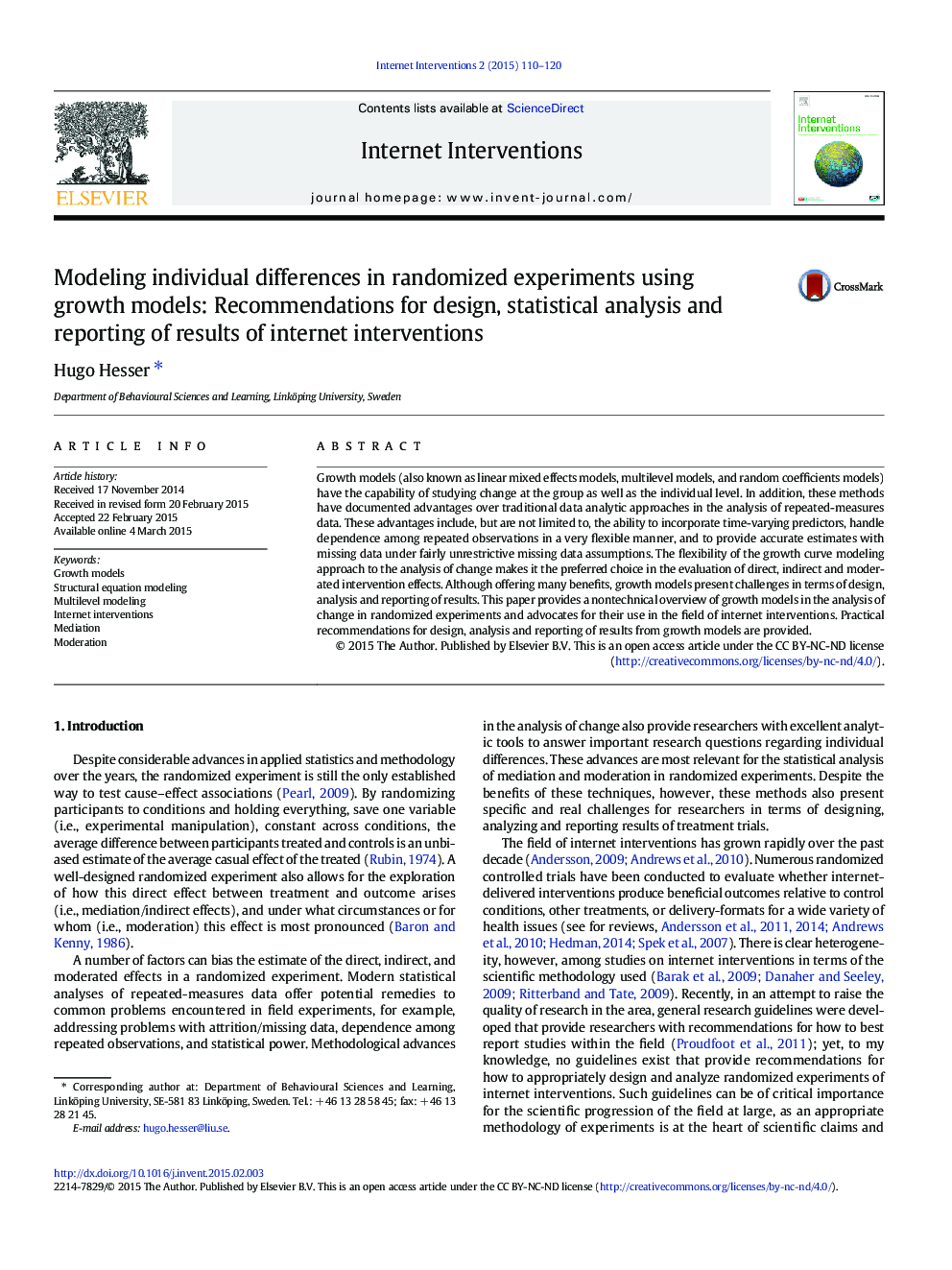| کد مقاله | کد نشریه | سال انتشار | مقاله انگلیسی | نسخه تمام متن |
|---|---|---|---|---|
| 557126 | 874590 | 2015 | 11 صفحه PDF | دانلود رایگان |
• This paper provides a nontechnical overview of growth models.
• I advocate for these methods use in the field of internet interventions.
• Recommendations for design, analysis and reporting of results are provided.
Growth models (also known as linear mixed effects models, multilevel models, and random coefficients models) have the capability of studying change at the group as well as the individual level. In addition, these methods have documented advantages over traditional data analytic approaches in the analysis of repeated-measures data. These advantages include, but are not limited to, the ability to incorporate time-varying predictors, handle dependence among repeated observations in a very flexible manner, and to provide accurate estimates with missing data under fairly unrestrictive missing data assumptions. The flexibility of the growth curve modeling approach to the analysis of change makes it the preferred choice in the evaluation of direct, indirect and moderated intervention effects. Although offering many benefits, growth models present challenges in terms of design, analysis and reporting of results. This paper provides a nontechnical overview of growth models in the analysis of change in randomized experiments and advocates for their use in the field of internet interventions. Practical recommendations for design, analysis and reporting of results from growth models are provided.
Journal: Internet Interventions - Volume 2, Issue 2, May 2015, Pages 110–120
